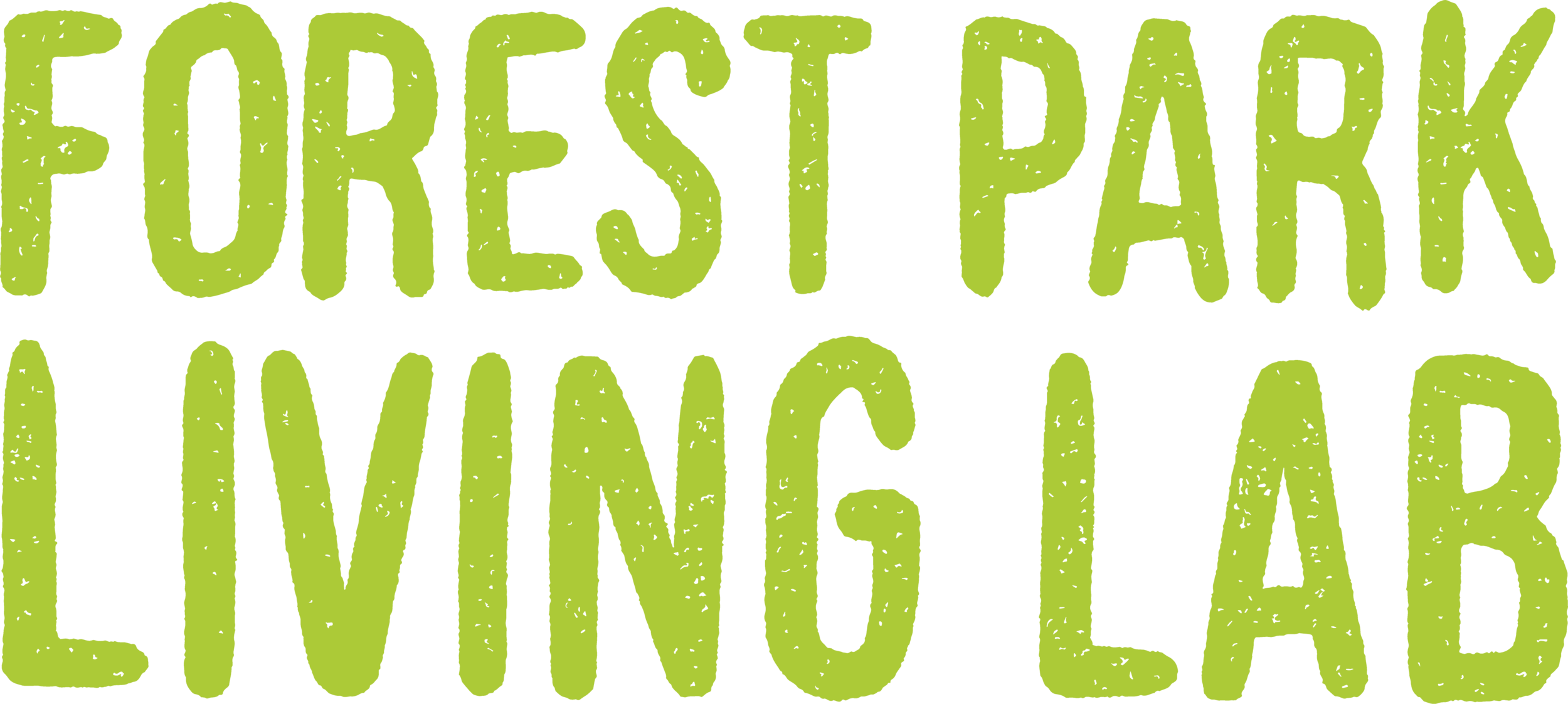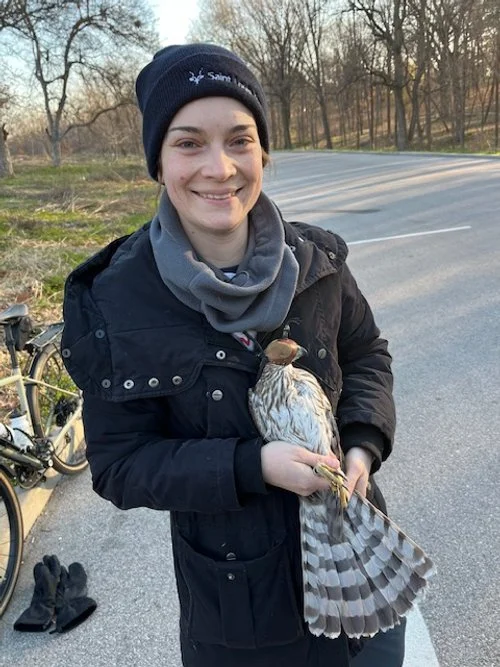It's tough to be an urban raptor
Urban animals face many anthropogenic (human-caused) threats. For raptors, such threats can include poisoning from eating rodents that have ingested rodenticides, collisions with windows that are so reflective they look like the sky, and being hit by vehicles. We are sad to share that one of our GPS-tagged Red-tailed Hawks, “Topaz”, was found dead on Interstate 64 just south of the park, presumably because he’d been hit by a vehicle.
Collecting data from Topaz in February. A hood placed over the eyes helps keep raptors calm while being handled.
Topaz joined the Forest Park Living Lab in February of 2024, when we fitted him with a solar GPS tag and collected health samples before releasing him back into Forest Park. He gave us incredible movement data in the following months.
Topaz’s movements over two months. Each pink dot represents a location he visited. He spent a lot of time sitting on light posts along the interstate where he would eventually be hit by a vehicle.
Topaz isn’t the only Forest Park raptor that has been affected by vehicle collisions. In 2023, “Lynyrd”, another Red-tailed Hawk, was first found on the ground near Forest Park unable to fly. He turned out to have several broken wing and tail feathers consistent with being hit by a car. Lynyrd’s feathers were repaired by expert wildlife rehabbers at the World Bird Sanctuary through a process called “imping”. We released him with a GPS tag in Forest Park just a few days later.
Takeoff! Lynyrd flies off in Forest Park after being rehabbed and fitted with a GPS transmitter. A happy outcome after being hit by a car!
What can you do to help urban wildlife? Avoid using rodenticides or sticky traps to control pests, consider adding stickers or other strike deterrents to your windows to help birds see them, and keep an eye out for wildlife while driving!
Of course, raptors have to deal with more natural threats too. This spring we spotted a raccoon lounging in the nest of “Katrina”, a GPS-tagged Cooper’s Hawk in Forest Park. Raccoons are important members of the ecological community. As nest predators, they can eat the eggs and young of many species of birds!
A Forest Park raccoon in a Cooper’s Hawk nest.
Not to worry! Katrina lost her nest early in the season, and her GPS data indicates that she likely found a second nest site.
Dr. Stella Uiterwaal holding Katrina the Cooper’s Hawk prior to release with a GPS tag. Katrina wears a specially designed hood to keep her calm during the quick process of sampling collection and tagging.





